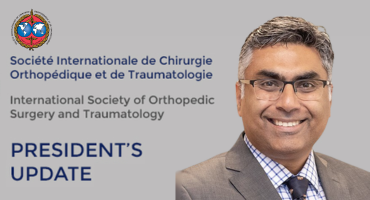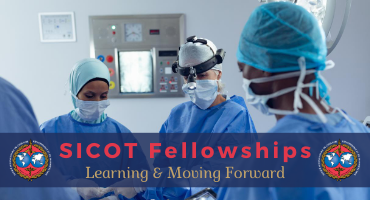Feed aggregator
Transfusion of modified whole blood versus blood components therapy in patients with severe trauma: Randomized controlled trial protocol (WEBSTER trial)
Injury. 2025 Jan 23:112173. doi: 10.1016/j.injury.2025.112173. Online ahead of print.
ABSTRACT
Hemostatic resuscitation is a mainstay in the management of trauma patients. Factors such as blood loss and tissue injury contribute to coagulation and hemodynamic status imbalances. Hemorrhage remains a leading cause of death in trauma patients, despite advances in strategies such as damage control surgery, massive transfusion protocol, and intensive care. Conventional hemostatic resuscitation often involves a 1:1:1 ratio of red blood cells, plasma, and platelets. However, this ratio has disadvantages, especially in low-resource settings. Whole blood transfusion maintains a physiological rate of cells, clotting factors, and hemostatic properties. Advances in the whole blood elucidated a new opportunity for its implementation in civilian trauma centers. However, the effect of initial resuscitation with whole blood in trauma patients is unclear. This study aims to determine the effect of hemostatic resuscitation using whole blood on mortality and evolution of organ dysfunction in severe trauma patients compared to blood components therapy. This clinical trial attempts to resolve the debate and uncertainty of using whole blood vs. blood components. An open-label, randomized, prospective, single-center and controlled trial will be performed. Participants will be randomly assigned to receive either 3 units of whole blood or 3 units each of red blood cells and fresh frozen plasma, plus half an apheresis unit of platelets (equivalent to 3 platelet units). A second intervention of the same ratio will be administered if further transfusion is required. The primary outcome is a hierarchical composite outcome based on mortality at 28 days and the evolution of organ dysfunction. Organ dysfunction will be measured as the difference in the score between the fifth and first days of the SOFA (Sequential Organ Failure Assessment). Secondary outcomes are mortality, coagulopathy profile, intensive care unit free days, length of hospital stay, and volumes of transfusion requirements. Safety outcomes are complications related to transfusion and complications related to trauma (acute distress respiratory syndrome, pulmonary embolism, deep vein thrombosis, acute kidney injury with or without dialysis, stroke, myocardial infarction, cardiac arrest, sepsis, abdominal complications, abdominal compartment syndrome). TRIAL REGISTRATION: ClinicalTrials.gov: NCT05634109 - Whole Blood in Trauma Patients with Hemorrhagic Shock (WEBSTER).
PMID:40087111 | DOI:10.1016/j.injury.2025.112173
Intraoperative assessment of syndesmotic instability: What technique minimizes surgeon error?
Injury. 2025 Mar 7;56(4):112237. doi: 10.1016/j.injury.2025.112237. Online ahead of print.
ABSTRACT
BACKGROUND: Assessment of intraoperative syndemsotic instability remains a controversial topic. To date, no study has directly compared 5 available methods.
MATERIALS AND METHODS: The purpose of the present study was to assess the reliability of five stress assessment methods (Cotton Hook, External Rotation, Arthroscopic, Direct Palpation, and Direct Visualization) across various syndesmotic injury conditions (ventral disruption, 2-ligament injury, and 3-ligament injury) in an in-vitro model. It was hypothesized that the Cotton Hook (CHT) and External Rotation (ER) methods would be the least reliable. A cadaveric model of syndesmotic injury was employed in eight through the knee specimens and assessments were performed.
RESULTS: Overall, direct visualization was most reliable for discerning syndesmotic disruption, irrespective of the injury condition (p = 0.01). Arthroscopic assessment was reliable in 2 and 3-ligament injury conditions (p < 0.05); while Cotton Hook and External Rotation were reliable in 3-ligament injuries (p = 0.01, p = 0.04). Arthoscopic, Cotton Hook, and External Rotation assessment(s) were unreliable for discerning isolated ventral disruption (anterior inferior tibiofibular ligament).
CONCLUSIONS: In the present cadaveric model, direct visualization of the anterolateral articular surface of the ankle was the most reliable method for discerning syndesmotic injury. Discontinuity of the articular surface between the anterolateral tibia and anteromedial fibula was readily identified in all injury conditions. Surgeons should be cognizant of the inherent subjectivity, and limited reliability of historically popularized syndesmotic stress assessment methods.
LEVEL OF EVIDENCE: Level V, cadaveric.
PMID:40086323 | DOI:10.1016/j.injury.2025.112237
JBJS Reviewers: Please Accept Our Gratitude and a Little More
J Bone Joint Surg Am. 2024 Mar 20;106(6):483-484. doi: 10.2106/JBJS.24.00066. Epub 2024 Mar 20.
NO ABSTRACT
PMID:40086829 | DOI:10.2106/JBJS.24.00066
Dark side of the shoulder: suprascapular and axillary nerve compressions
Int Orthop. 2025 Mar 14. doi: 10.1007/s00264-025-06465-9. Online ahead of print.
ABSTRACT
BACKGROUND: The suprascapular and axillary nerves can be subject to entrapment due to both their anatomical courses and their anatomical relationships with surrounding anatomical structures around shoulder. These entrapments were previously considered as a diagnosis of exclusion. However, today these pathologies can be diagnosed as primary. The most common complaints of patients are pain and sometimes weakness. The clinician's suspicion is very important in making diagnosis. The patient's history, duration of symptoms, and information such as the movements in which the complaints increase should be questioned carefully and in detail. In physical examination, symmetrical evaluation of both shoulders can provide important information. In addition, cervical and brachial plexus pathologies should be kept in mind. According to the suprascapular and axillary nerve innervations, muscle atrophy should be evaluated during inspection. Range of motion and neurological examination around shoulder should be performed. Since these entrapments can be seen together with rotator cuff tears and labrum pathologies etc., these additional pathologies should also be targeted during evaluation. The evaluation should be expanded with imaging methods such as plain radiographs, ultrasonography, computed tomography, magnetic resonance imaging, electrodiagnostic studies and local anaesthetic injections to the entrapment area. There is no definitive method to diagnose these pathologies. As a result of all these evaluations, a diagnosis can be made. There is no consensus on treatment. In isolated entrapment cases where there are no additional surgical pathologies such as space-occupying lesions, non-operative treatment is primarily recommended. It is generally recommended to try non-operative treatment for at least six months. Surgical treatment is recommended in cases where non-operative treatment fails or in cases where there are additional pathologies requiring surgery or in cases where there is extrinsic compression such as sapce-occupying lesions. In the decision and choice of surgical treatment, it is very important to determine the aetiology precisely. Surgical treatment can be performed open and arthroscopically. Various additional arthroscopic portals and techniques have been described. However, there is no clear consensus on the superiority of these treatments over each other. Although physical therapy is recommended after surgical treatment, there is no consensus on this issue in the literature.
AIM: This review aims to summarize the diagnosis and management of suprascapular and axillary nerve entrapments in athletes, focusing on clinical presentation, diagnostic methods, treatment options, and current controversies.
PMID:40082300 | DOI:10.1007/s00264-025-06465-9
Lacertus fibrosus release in proximal median nerve entrapment- a systematic review
Int Orthop. 2025 Mar 14. doi: 10.1007/s00264-025-06493-5. Online ahead of print.
ABSTRACT
BACKGROUND: The role of lacertus fibrosis as the primary perpetrator behind the illusive pronator teres syndrome is becoming increasingly recognized in recent literature. The aim of this systematic review is to explore the outcomes of lacertus fibrosis release in patients complaining of proximal median nerve entrapment signs and symptoms.
METHODOLOGY: In this systematic review, Pubmed, Cochrane Library, Scopus, Ovid databases were reviewed. Studies in which structures, other than the lacertus fibrosus, in the proximal forearm had been concomitantly released were deemed illegible. Various outcome assessment tools were utilized; those were pain, numbness, and satisfaction visual analog scales, return of function and muscle strength, quick DASH, work DASH, and activity DASH scores. Adherence to PRISMA guidelines was maintained.
RESULTS: A total of seven studies, three interventional and 4 retrospective observational studies, were included in this review out of 118 articles. These included 446 participants who underwent lacertus fibrosis release with a mean age of 45 years old across a mean duration of postoperative follow-up of 16.1 months. A significant proportion of the patients had a history of unsuccessful conservative or surgical management (prior carpal tunnel release in 10.5%). Minimal access surgery under WALANT was performed in 95%, US-guided release under WALANT in 3.3%, and open exploration was done in 1.5%. A horizontal incision hidden in the elbow flexion creese was done in 74.2%, oblique incision 2 cm distal and 2 cm radial to the medial epicondyle in 20.8%, and open exploration through a Z-shaped incision over the antecubital fossa in 1.5%. Immediate pain relief and return of function and strength was reported in 99.6%. A significant improvement was reported in postoperative quick DASH (mean = 24 points), work DASH (mean = 28.8 points), and activity DASH (mean = 44.8 points). Further, a significantly lower VAS score was obtained on pain, numbness, and paraesthesia scales. There were two complications, a case of postoperative haematoma and another case of surgical site infection. Seven patients complained of residual symptoms by the end of the follow up duration; carpal tunnel release was done in three and release of superficialis arcade was necessitated in four other cases.
CONCLUSION: Lacertus syndrome can be optimally managed by surgically releasing the lacertus fibrosus. This can be done as a minimally invasive procedure under WALANT. A high index of suspicion is required when encountering patients with signs and symptoms of median nerve entrapment, specifically those who were treated unsuccessfully with the presumption of carpal tunnel syndrome.
PMID:40082299 | DOI:10.1007/s00264-025-06493-5
Liposomal bupivacaine versus standard periarticular injections in total hip and knee arthroplasty: a prospective, randomized non-inferiority trial
SICOT J. 2025;11:17. doi: 10.1051/sicotj/2025012. Epub 2025 Mar 13.
ABSTRACT
INTRODUCTION: Numerous multimodal pain protocols have been developed to optimize pain control, reduce narcotics consumption, and shorten the length of stay after total hip and knee arthroplasty (THA/TKA). Liposomal bupivacaine (LB) has been postulated to reduce narcotic requirements after arthroplasty but is not without additional cost. The aim of this study was to determine if the addition of LB to our standard periarticular injection would improve postoperative pain and shorten the length of stay in patients undergoing TKA or THA.
METHODS: We performed a prospective randomized, blinded non-inferiority study of patients undergoing THA and TKA. Patients were randomized to a periarticular injection with and without LB. There were 118 hips and 64 knees included in the study with no demographic differences between groups. Post-operative pain management was performed by a second provider who was blinded to the patient's experimental group designation.
RESULTS: Cost analysis determined that LB increased cost by $305 dollars per patient when accounting for the cost of injections as well as intravenous and oral pain medications. LB led to a minor reduction in narcotic use in THA patients (equivalent to a single 10 mg oxycodone dose), but this difference may lack clinical relevance. No significant benefits were observed in TKA patients. No difference was identified in self-reported pain scores or lengths of hospital stay.
DISCUSSION: The addition of LB did not significantly reduce narcotic consumption in patients undergoing TKA, while the cost of LB is prohibitive and should be considered an area of potential cost savings by surgeons and hospitals. The minor reduction in narcotic use in patients undergoing THA likely lacks clinical significance.
PMID:40079611 | PMC:PMC11905768 | DOI:10.1051/sicotj/2025012
Predicting survival outcomes in dedifferentiated chondrosarcoma: a prognostic factor analysis from a National Registry
SICOT J. 2025;11:16. doi: 10.1051/sicotj/2025011. Epub 2025 Mar 13.
ABSTRACT
INTRODUCTION: Dedifferentiated chondrosarcoma (DDCS) is a high-grade subtype of chondrosarcoma with a poor prognosis. Treatment for localized DDCS generally involves wide resection; the effectiveness of adjuvant radiotherapy and chemotherapy is questionable. This research was designed to find prognostic factors for DDCS and evaluate the impact of adjuvant therapies on localized cases.
METHODS: One hundred thirty-two patients with DDCS diagnosed by pathology in the period 2006 to 2022 were identified in the Japanese National Bone and Soft Tissue Tumor Registry database and were retrospectively analyzed.
RESULTS: Patients with distant metastases at diagnosis (n = 34) had significantly poorer survival than those without metastases (n = 98), with a 5-year disease-specific survival (DSS) of 9.7% vs. 37.1% (P < 0.0001). For patients without distant metastasis at diagnosis, uni- and multivariate analysis showed that R1 or R2 surgical margin was an independent risk factor linked with unfavorable local recurrence (hazard ratio [HR] 3.39 [95% CI: 1.35-8.52]; P = 0.010). Adjuvant radiotherapy was not associated with local recurrence (HR 2.41 [95% CI: 0.87-6.64]; P = 0.090). Larger size (HR 1.13 [95% CI: 1.06-1.19]; P < 0.001) and no surgery (HR 3.87 [95% CI: 1.61-9.28]; P = 0.002) were independent risk factors for unfavorable DSS. Previous surgery (HR 0.19 [95% CI: 0.04-0.84]; P = 0.028) and adjuvant chemotherapy (HR 0.36 [95% CI: 0.16-0.77]; P = 0.009) were independent risk factors for favorable DSS.
DISCUSSION: Survival may have been improved by chemotherapy, but the effect of adjuvant radiotherapy in controlling the local spread of the tumor appears to have been limited in DDCS cases that were localized.
PMID:40079610 | PMC:PMC11905765 | DOI:10.1051/sicotj/2025011
Thai version of ACL return to sports after injury scale translated with cross-cultural adaptation provided the good validation in Thai patients who received ACL reconstruction
SICOT J. 2025;11:15. doi: 10.1051/sicotj/2025009. Epub 2025 Mar 13.
ABSTRACT
PURPOSE: The Anterior Cruciate Ligament Return to Sports after Injury scale (ACL-RSI) has been translated and culturally adapted into the Thai version. This study aimed to evaluate the reliability and validity of the Thai ACL-RSI for athletes recovering from ACL reconstruction.
METHODS: This study was a cross-sectional study. Forward-backward translation, cultural adaptation, and validation of the Thai ACL-RSI were performed and tested in 40 athletes (8 females, 32 males; mean age 30.2 ± 7.32 years; mean body weight 70.7 ± 13.36 kg; mean height 170.1 ± 6.53 cm; mean body mass index 24.5 ± 3.74 kg/m2; mean time from surgery to evaluation 8.43 ± 1.83 months). Participants completed the translated Thai ACL-RSI and the validated Thai Tampa Scale of Kinesiophobia (TSK). The Thai ACL-RSI underwent content validity, internal consistency, reliability, and construct validity assessment.
RESULTS: The Thai ACL-RSI demonstrated commendable content validity (item-objective congruence index [IOC] 0.91), internal consistency (Cronbach's alpha coefficient 0.84), and test-retest reliability (intraclass correlation coefficient [ICC] 0.75). There was a significant negative correlation with TSK (r = -0.67, p < 0.001).
CONCLUSION: The Thai ACL-RSI is validated, reliable, and consistent with the Thai TSK. This instrument can potentially measure psychological factors influencing preparedness for sports participation after ACL reconstruction. The evaluation of return-to-sport readiness should involve a multidisciplinary approach, including surgeons, physiotherapists, and psychologists, to ensure a comprehensive assessment of physical, functional, and psychological factors.
PMID:40079609 | PMC:PMC11905766 | DOI:10.1051/sicotj/2025009
Cemented dual mobility cup for primary total hip arthroplasty: survival and quality of life. A multicenter study
SICOT J. 2025;11:14. doi: 10.1051/sicotj/2025006. Epub 2025 Mar 13.
ABSTRACT
INTRODUCTION: Dual mobility cups are characterized by having a prosthetic head inside a polyethylene core that later articulates with a metal cup implanted in the acetabulum. These cups can be cemented or uncemented. This study aimed to determine the survival of a cemented dual-mobility cup (CDMC) with a cobalt-chromium head (CoCr) and the quality of life (QOL) of operated patients.
METHODOLOGY: Multicenter historical cohort study where survival and QOL were estimated. The cohort includes patients who underwent a primary total hip arthroplasty (THA) with a CDMC and CoCr head. The patients were operated on between 2011 and 2013.
RESULTS: 40 patients from 6 institutions with a median age of 81 (IQR 22.25) years. The results in the Kaplan-Meier estimation showed a survival of 94.2% (95% CI [86.6% - 100%]) at 5 years and a maximum follow-up of 9.5 years. Three failures occurred (two dislocations and one mechanical loosening), and Oxford Hip Scale (OHS) of 41.5 (IQR 10.50) points was recorded.
CONCLUSIONS: In terms of survival and the score obtained in the OHS, the CDMC has comparable results with the scientific literature found on uncemented dual mobility cups. This demonstrates adequate results in patients with a maximum follow-up of 9.5 years.
PMID:40079608 | PMC:PMC11905767 | DOI:10.1051/sicotj/2025006
Outcomes of amputation and limb salvage in combat injuries: Does level of injury matter? A secondary analysis of Military Extremity Trauma Amputation/Limb Salvage (METALS) study data
Injury. 2025 Feb 19;56(4):112220. doi: 10.1016/j.injury.2025.112220. Online ahead of print.
ABSTRACT
BACKGROUND: The Lower Extremity Assessment Project (LEAP) and Military Extremity Trauma Amputation/Limb Salvage Study (METALS) reported conflicting results with respect to severe lower extremity injuries treated with limb salvage versus amputation. The LEAP study reported no difference between amputation and limb salvage groups, while the METALS study reported improved outcomes with amputation. The purpose of this study was to re-evaluate the METALS data to determine whether the ankle/hindfoot injuries were the main driver of the results of improved outcome with amputation.
METHODS: This is a retrospective secondary analysis of METALS data including military personnel deployed to Afghanistan or Iraq between 2003 and 2007 with severe lower extremity combat injuries. METALS patients with a unilateral transtibial amputation, or unilateral limb salvage of a qualifying injury distal to the femoral condyles were included. Amputation patients were compared to two separate limb salvage groups: severe ankle/hindfoot injuries (ie. ankle/hindfoot salvage group) versus mid/proximal tibia injuries (ie proximal limb salvage group). Short Musculoskeletal Function Assessment (SMFA) scores were compared between groups. Multivariable regression models compared outcomes across treatment groups, adjusting for age, race/ethnicity, time from injury, combat experience, and social support.
RESULTS: 161 patients were included: 60 amputation, 41 ankle/hindfoot salvage, 62 proximal limb salvage. Amputation patients reported better function (lower SMFA scores) compared to both limb salvage groups for the daily activities sub-score. Amputation patients reported better function than proximal salvage patients in all domains. There was no difference in SMFA scores between the two limb salvage groups. On adjusted analysis, amputation patients reported significantly better function for total dysfunction and daily activity scores than either limb salvage group.
CONCLUSIONS: This secondary analysis of the METALS data reveals that amputation resulted in superior functional outcomes compared to limb salvage after both ankle/hindfoot and more proximal tibial combat related injuries. This study highlights differences between civilian and military traumatic extremity injuries and indicates that treatment results cannot be generalized between populations.
LEVEL OF EVIDENCE: Prognostic Level II.
PMID:40081154 | DOI:10.1016/j.injury.2025.112220
Letter to the editor: Carpal tunnel syndrome diagnosis as a risk factor for falls
Int Orthop. 2025 Mar 13. doi: 10.1007/s00264-025-06490-8. Online ahead of print.
NO ABSTRACT
PMID:40080131 | DOI:10.1007/s00264-025-06490-8
Musculoskeletal infections caused by streptococcus infantarius - a case series and review of literature
Int Orthop. 2025 Mar 13. doi: 10.1007/s00264-025-06487-3. Online ahead of print.
ABSTRACT
PURPOSE: The full spectrum of diseases caused by S. infantarius remains poorly understood, particularly its role in musculoskeletal infections.
METHODS: A retrospective study was conducted from January 2008 to May 2024. Patients with bacterial infections and detection of S. infantarius in at least one tissue sample, fluid sample, or blood cultures were included. Follow-up controls in patients with musculoskeletal infection were performed.
RESULTS: S. infantarius could be identified in at least one sample (blood cultures, wound fluid, wound swab, bile, tissue or urine sample) of 72 patients. 33 were considered clinically relevant with symptomatic infections (63.4 ± 21.1 years; positive samples: 1.39 ± 0.86; total number of samples: 2.7 ± 1.76). Non-muskuloskeletal infections (n = 29; 61.1 ± 21.5 years; positive samples: 1.28 ± 0.59) included a variety of different infections (sepsis (n = 11), abdominal/gastrointestinal/urogenital infections (n = 16), soft tissue infections (n = 2)). Four patients with musculoskeletal S. infantarius infection (positive samples: 2.25 ± 1.89; diagnosis: acute PJI, spondylodiscitis, chronic PJI and postoperative spinal wound infection) required surgical and/or antimicrobial treatment. Follow-up after musculoskeletal infection varied between 10 and 60 months. Antibiotic susceptibility testing displayed a sensitivity to Penicillin in all isolates. No patient had a recurrent positive sample/infection with S. infantarius.
CONCLUSIONS: This study describes musculoskeletal infections caused by S. infantarius, highlighting its possible relevance as pathogen in orthopedic infections. The findings underscore the importance of recognizing and appropriately treating S. infantarius. In case of penicillin allergy, clindamycin shows to be an effective alternative treatment.
PMID:40080130 | DOI:10.1007/s00264-025-06487-3
Anatomical variations and their association with carpal tunnel syndrome: a comparison with healthy controls
Int Orthop. 2025 Mar 13. doi: 10.1007/s00264-025-06480-w. Online ahead of print.
ABSTRACT
PURPOSE: The prevalence of carpal tunnel syndrome (CTS) as the foremost upper extremity entrapment neuropathy is well-documented. The present study aimed to evaluate the prevalence of anatomical variations in the carpal tunnel and their potential role as risk factors for CTS.
METHODS: Data from 447 CTS patients who underwent median nerve decompression between 2018 and 2019 were retrospectively analyzed. As a control group, 200 hands from 103 age- and sex-matched asymptomatic volunteers were further investigated.
RESULTS: Anatomical variations identified through ultrasound in 19.7% of CTS hands and 16.0% of controls. Specifically, 10.3% of CTS hands had persistent median arteries, while 14.3% had bifid median nerves. Both variations occurred in 4.9% of CTS patients. In the control group, 13.0% had persistent median arteries and 11.0% had bifid median nerves, with both found in 8.0%.
CONCLUSIONS: Anatomical variations were found in both, CTS patients and controls, but their prevalence did not differ significantly between groups, suggesting they are not independent risk factors for CTS.
PMID:40080129 | DOI:10.1007/s00264-025-06480-w
Prevalence and rehabilitation factors associated with chronic pain after total knee arthroplasty in Jordan
Int Orthop. 2025 Mar 13. doi: 10.1007/s00264-025-06489-1. Online ahead of print.
ABSTRACT
PURPOSE: Total knee arthroplasty (TKA) is a highly effective treatment for osteoarthritis patients unresponsive to conservative therapies. Chronic postsurgical pain (CPSP) following TKA is understudied, with approximately 20% of patients reporting chronic pain. This cross-sectional study conducted in Jordan aims to (1) determine the prevalence of chronic knee pain after TKA in the Jordanian population and (2) identify associations between demographics and rehabilitation factors with chronic pain.
METHODS: Data were collected from 90 Jordanian patients post-TKA. Demographics (age, gender, BMI, and smoking) and rehabilitation factors (pre-operative sessions, post-operative sessions, and duration) were recorded. Statistical analyses included descriptive statistics and 95% confidence intervals. Independent t-tests and Chi-square analyses were used to determine the differences between those with and without chronic pain. Pearson correlations were used to determine the association between demographic and rehabilitation factors with the prevalence of chronic pain.
RESULTS: Ninety patients were included in the study with an average age of 60.3 ± 10.1 years. The prevalence of chronic post-TKA pain in Jordan was 57.8% (52/90), (95% CI: 46.9-68%). No significant differences were found in demographics and pre-operative rehabilitation. Chronic pain was significantly associated with post-operative rehabilitation sessions and duration (r =.349, p =.001) (r =.342, p =.001, respectively. Patients with chronic pain received fewer post-operative rehabilitation sessions (P <.001) and had shorter rehabilitation durations (P <.001) compared to patients without chronic pain.
CONCLUSION: Chronic pain after TKA is highly prevalent in Jordan (57.8%), with reduced rehabilitation engagement strongly linked to its occurrence. Optimizing post-operative rehabilitation protocols may mitigate CPSP risk among Jordanian TKA patients.
PMID:40080128 | DOI:10.1007/s00264-025-06489-1
Total knee arthroplasty following previous hardware implantation: do hardware removal strategies influence periprosthetic joint infections? A systematic review and meta-analysis
EFORT Open Rev. 2025 Feb 3;10(2):95-103. doi: 10.1530/EOR-24-0100. Print 2025 Feb 1.
ABSTRACT
PURPOSE: Total knee arthroplasty (TKA) in patients who underwent previous knee surgeries can be a challenging procedure both technically and for the complication rate. Conversion TKA is affected by a higher risk of infection compared to primary TKA. The aims of this meta-analysis are i) to compare the infectious risk among patients undergoing TKA after a prior hardware implantation, evaluating removal vs maintenance of the hardware, and ii) within the removal group, to compare staged vs concurrent procedure.
METHODS: In accordance with the PRISMA guidelines, a systematic literature review was conducted up to January 2024. The review was registered in the PROSPERO database: CRD42024510444. The inclusion criteria comprised the following: i) patients aged 18 years or older, ii) individuals who had undergone total knee replacement and iii) those with a history of prior nonabsorbable hardware implantation. The pooled incidence of periprosthetic joint infections (PJI) was reported using odds ratios with corresponding 95% confidence intervals (CIs).
RESULTS: The investigation of database and references identified 284 studies. PJI risks differed significantly among groups, with a higher risk in the removal group (z = 3.5630, P = 0.0004). Furthermore, within the removal group, the risk of PJI was lower in cases of staged removal compared to concurrent removal (z = 2.0931, P = 0.0363).
CONCLUSIONS: TKA following a previous knee hardware implantation indicates a higher PJI risk when the hardware is removed compared to leaving it in place. If hardware removal is necessary, staged removal is recommended. The presence of minor hardware is the only scenario where, if removal is necessary, one-stage approach is preferred.
PMID:40071998 | PMC:PMC11825155 | DOI:10.1530/EOR-24-0100
Management of pediatric femoral neck fractures from classification to surgery: a review of indications based on anatomic and radiographic features of the proximal femur
EFORT Open Rev. 2025 Mar 3;10(3):125-140. doi: 10.1530/EOR-2024-0129.
ABSTRACT
This review focuses on the anatomic and radiographic characteristics of the pediatric proximal femur and the advantages and disadvantages of different protocols for the management of pediatric femoral neck fractures (PFNFs) in terms of fracture classification, reduction methods, reduction quality and fixation methods, with the goal of proposing an optimal treatment protocol for PFNFs to reduce the incidence of postoperative complications. The anatomic and radiographic characteristics of the pediatric proximal femur, including the presence of an active growth plate, an immature femoral calcar, greater trabecular density and plasticity and a relatively immature blood supply are very different from those of the adult proximal femur. Treatment protocols for PFNFs must differ from those for adult femoral neck fractures. PFNFs with posterior translation, and those with comminuted medial-posterior columns, are associated with a higher postoperative complication rate. This review suggests that the degree of damage to the nutrient vessels along the posterior femoral neck and the stability of the medial-posterior column of the femoral neck should be well assessed in patients with PFNFs for both classification and treatment purposes. Anatomic reduction through an anterior approach, placement of a small number of implants in the mid-inferior part of the femoral neck and additional external support are effective in reducing postoperative complications in patients with PFNFs.
PMID:40071987 | PMC:PMC11896687 | DOI:10.1530/EOR-2024-0129
Consensus document on the management of wound closure in orthopaedic surgery
EFORT Open Rev. 2025 Feb 3;10(2):82-94. doi: 10.1530/EOR-24-0002. Print 2025 Feb 1.
ABSTRACT
Wounds in orthopaedic surgery differ from wounds in other surgical fields in various ways. Tissues that are highly affected due to the trauma itself, the presence of an orthopaedic implant and the performance of prosthetic surgery in patients with many comorbidities make these wounds need special consideration. Complications of the surgical wound in orthopaedic surgery are not unusual, being the main cause of medical care and readmission in the first 90 days. There is no consensus on the best way to perform closure in orthopaedic surgery. The national 'Adequate Wound Management in Orthopaedic Surgery' survey has shown interindividual variability in wound closure and soft tissue management in orthopaedic surgery at the local level. This consensus document, generated by a group of experts in soft tissue management in orthopaedic surgery, proposes recommendations based on evidence (using the GRADE methodology) to promote best practices in this field. This document considers recommendations for surgical wound closure, dressing management and haemostasis. In addition, some of the 32 questions in the national survey, plus others relevant to the subject, were taken as a starting point for developing the contents.
PMID:40071985 | PMC:PMC11825138 | DOI:10.1530/EOR-24-0002
DNA methylation and its influence on the pathogenesis of osteoarthritis: a systematic literature review
EFORT Open Rev. 2025 Feb 3;10(2):66-74. doi: 10.1530/EOR-22-0088. Print 2025 Feb 1.
ABSTRACT
PURPOSE: Evolving evidence demonstrates the role of epigenetics in the pathogenesis of osteoarthritis (OA), whereas in terms of mechanism, DNA methylation has received the highest attention thus far. This systematic review summarizes the current knowledge of DNA methylation and its influence on the pathogenesis of OA.
METHODS: A protocol in alignment with the PRISMA guidelines was employed to systematically review eight bibliographic databases between 1 January 2015 and 31 January 2021, to identify associations between DNA methylation and articular chondrocytes in OA.
RESULTS: We identified 23 gene-specific studies and 28 genome-wide methylation analyses. Gene-specific studies focused on pro-inflammatory markers in OA, demonstrating that DNA hypomethylation in the promoter region results in overexpression and hypermethylation is linked to gene silencing. Others reported on the association between OA risk genes and DNA methylation. Genome-wide methylation studies reported on differentially methylated regions (DMRs) comparing OA and non-OA chondrocytes. DMRs were seen in hip OA and knee OA chondrocytes.
CONCLUSION: The current body of literature demonstrates the potential and crucial role of DNA methylation in the pathogenesis and progression of OA. This knowledge contributes to the understanding of the pathomechanisms behind OA at gene-specific and genome-wide levels. The observed differences in DNA methylation between healthy and diseased tissues indicate the occurrence of changes in DNA methylation. Based on this, future research in this field that explores the characteristics of potentially reversible changes in DNA methylation may lead to opportunities for causative treatment options for OA.
PMID:40071982 | PMC:PMC11825139 | DOI:10.1530/EOR-22-0088
Unilateral biportal endoscopy: review and detailed surgical approach to extraforaminal approach
EFORT Open Rev. 2025 Mar 3;10(3):151-155. doi: 10.1530/EOR-24-0137. Print 2025 Mar 1.
ABSTRACT
Foraminal and extraforaminal lumbar disc herniations are common sources of pain and disability. Classic surgical treatments, such as open approach through Witsel technique, often involve resection of the superior articular process to decompress the foraminal space. Unilateral biportal endoscopy (UBE) has emerged as a minimally invasive alternative, providing enhanced visualization and precision while minimizing soft tissue damage. The extraforaminal approach using UBE offers a more effective solution for extraforaminal herniations, requiring less bone resection, reducing the risk of pars fracture and enhancing visualization. This article presents a comprehensive methodology for the extraforaminal approach, supported by an illustrated guide, surgical tips and highlights of UBE's advantages over traditional techniques.
PMID:40071975 | PMC:PMC11896681 | DOI:10.1530/EOR-24-0137














